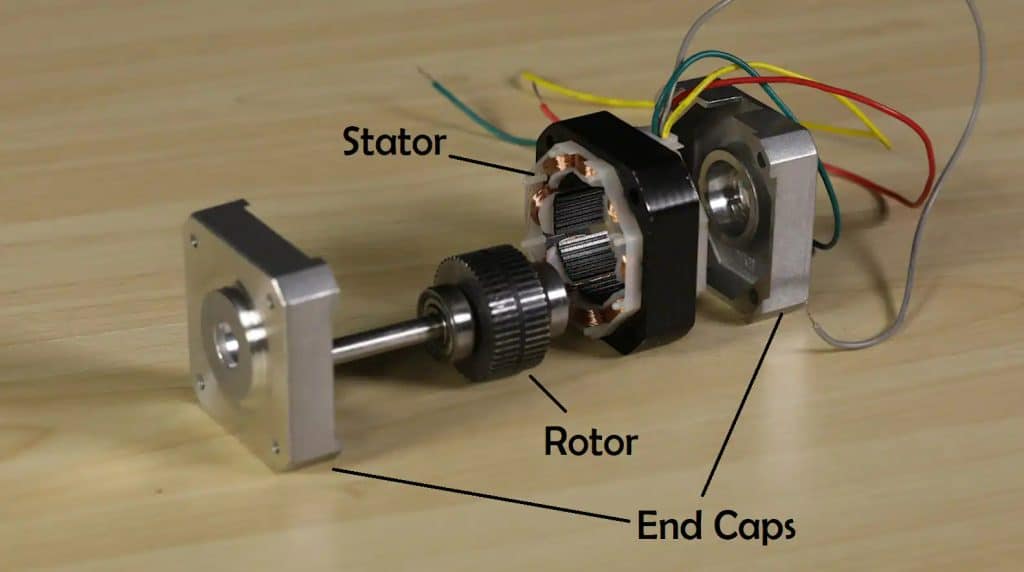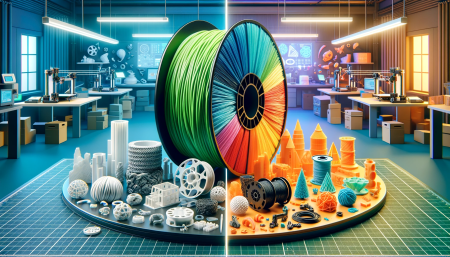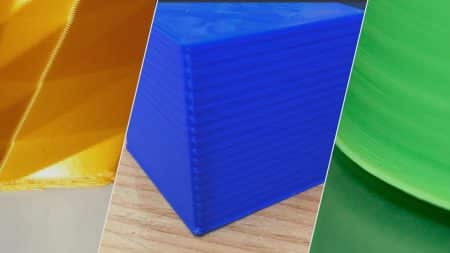Sooner or later your will face with Clicking Extruder Ender 3 You’ll likely experience it at some point. It can cause severe problems in a 3D printed part, aside from the unpleasant sound. Under-extrusion is the most evident issue produced by a clicking extruder. However, filament leaks from the hot end may be noticeable in severe circumstances.
Something is amiss with the filament flow when you hear a clicking extruder. The extruder’s stepper motor stalls and cycles backward, but it could happen for various reasons.
Check whether your nozzle is too close to the print bed, the extrusion temperature is too low or tube, and if dust/debris is stuck in your extruder/gears. The solution is usually pretty straightforward after you’ve identified the problem.
Why is Your 3D Printer Extruder Clicking?
When the filament cannot migrate out of the nozzle or farther into the PTFE tube. The stepper motor skipping is the primary cause; it’s likely trying to push the filament out but failing. Another possibility is that you’re printing at the wrong temperature.
This can be caused by various factors, including your nozzle being too close to the print bed, your stepper motor losing steps, or problems with your bearings that keep the filament under pressure.
1. Nozzle is too close to the printing surface

Your nozzle may have been too close to the printer bed on the initial few extruded layers.
A grinding noise from your 3D printer can easily be caused by the strong metal material of your nozzle scratching on your printing surface. If you’re having trouble with this, the solution is simple.
The failure to build up enough pressure to pass your filament through properly leads your extruder to skip, resulting in the clicking sound.
You should also double-check that your 3D printer’s z-stop is set correctly to prevent it from going too low.
Solution
Simply level your bed with a tiny ‘give’ using the paper/card beneath the nozzle. Then, go over the middle to ensure your print bed is level. After completing all four corners, go over them again to check the levels aren’t off from the last leveling.
Check our Bed Leveling Guide for more details.
It’s good to level your printer bed when heated. Because heated beds might somehow distort,
You can also perform leveling print tests that reveal any leveling concerns, allowing you to determine whether your extrusion is enough.
A more accurate, in-depth leveling procedure is demonstrated in the video below.
This is far more likely to happen if you have a manual leveling bed.
Instead of manually leveling your bed, you can have your 3D printer do it using the BLTouch Auto-Bed Leveling Sensor. Auto Bed Leveling saves you a lot of time and hassle when setting up your printer.
It works on any bed material, and some users have reported an overall improvement in print quality and consistency. Knowing that your 3D printer is always level provides you a genuine sense of confidence in your equipment well worth the money.
2. Extrusion Temperature Is Inadequate

Your extrusion temperature is too low if clicking occurs in layers other than the first few extruded layers.
Suppose your material isn’t melting quickly enough due to a low extrusion temperature. In that case, your printer may make a clicking noise as it struggles to advance your filament.
When the speed settings are too high, your extruder may struggle to keep up.
Extrusion temperatures that are too low can result in uneven melting of your materials. In this scenario, the extruded thermoplastic is thicker than it should be. It does not have enough flow rates through the nozzle.
Suppose your extruder clicks on any FDM 3D printer. In that case, the solution is as simple as demonstrated here.
Solution
If this is the case, the simple solution is to raise the temperature of your printer, and everything should be back to normal.
3. The Extruder Isn’t Fast Enough to Keep Up With the Printer

If your printing speed is set too fast, your extruder may struggle to keep up with the feed rates, resulting in the extruder clicking or slipping. If this is the case, there is a simple solution.
Solution
Reduce your print speed to 35mm/s, then gradually increase it in 5mm/s increments.
High printer speeds are good for simple angles like a straight line. But steep twists and varied degrees can cause your printer difficulties extruding precisely at greater rates.
Investing in a higher-quality extruder can undoubtedly help in this area. Especially dual gear extruders are such a significant improvement. Check some best 3D printer extruders.
Depending on the price difference, you can now choose between buying a Genuine Bondtech BMG Extruder or a Bondtech LGX Large Gears eXtruder.
See my article on PLA 3D Printing Temperature for more information.
4. A clog in your nozzle or a break in your PTFE tubing

When your nozzle is obstructed, your printer frequently makes this clicking sound. It’s because your printer isn’t putting out as much plastic as it should be. When your nozzle becomes clogged, the extrusion and pressure build up, causing your extruder to slip.
Another concern is the thermal break between the heater block and the heat sink, where heat transfers from the heater block to the heat sink and, if not entirely functional, causes the plastic to bend somewhat.
This can cause a plugin to the plastic or a minor obstruction on the cold side, and it can happen at any moment throughout the print.
Solution
Give your nozzle a good cleaning, and if the obstruction is severe enough, a cold pull. Unclogging a Jammed Nozzle is a somewhat lengthy piece that many people have found helpful.
Reduce your temperature or replace your heat sink if you have a thermal break or a poor-quality heat sink.
A damaged PTFE tube can go undiscovered for a long time before you realize it’s causing problems with your prints.
The Capricorn PTFE tube has a very low friction coefficient, allowing the filament to move freely. It’s more responsive, resulting in higher print accuracy and a reduced need for retraction settings, saving you time.
The popularity of this tubing stems from how well it works and how long it lasts.
You gain less slippage, less wear and tear on your extruder, and, most importantly, a far better level of temperature resistance.
5. Extruder and Gears Contain Dust and Debris

As your filament is extruded, your extruder and gears continually operate and apply constant pressure. While this happens, your extruder and gears bite down on your filament. Which can leave dust and dirt in these components over time.
Solution
If you need a quick cure, simply exhale deeply into the extruder, which should do the trick if the buildup isn’t too bad. However, be sure you’re not inhaling the dust.
This, or simply washing down the extruder from the outside, may not be sufficient.
Most debris should come off with a moist paper towel without being pushed around.
The most effective option here is to disassemble it and give it a thorough wipe down to ensure that all of the dust and debris trapped inside is removed.
The simple solution here is to:
- Turn off your printer.
- Remove your extruder’s screws.
- Remove the feeder and fan assembly.
- Remove any debris.
- Reinstall the fan and feeder, and everything should be OK.
The type and quality of filament you use may also impact, so experiment with a few different brands to determine which one works best. Filament prone to brittleness, such as PLA, is more likely to cause this problem than TPU.
6. Incorrectly calibrated extruder motor or low stepper voltage

This is a more unusual cause, but it is feasible and has happened to some users. This could be your issue if you’ve tried several other options, and they haven’t worked.
Your printer’s motor may run erratically due to a loose or broken power connection, resulting in delayed feed to the print head. If you have this problem, you can hear a clicking noise during the printing process.
Whether the problem is caused by faulty or weak wires, it is a problem that can be resolved once it is identified.
Manufacturers are sometimes at blame in this situation, releasing power accessories that don’t perform as well as they should over time.
Double-check that your extruder’s wheel is securely attached to the feeder motor and isn’t slipping.
Solution
Ensure that the power connections are secure and that the cables are free of snags or damage. Check that your printer’s power cable is sturdy enough to handle it and correct the voltage.
If you feel this is the problem, you can get a new power cord or power supply.
7. Filament Feeder Problems Caused by Inadequate Filament Spring Tension

High spring tension can wear down your material, causing it to distort and move more slowly. As previously mentioned, this can result in a clicking noise.
You’ll experience uneven extrusion if your filament isn’t passed through correctly, equivalent to a low printing temperature. The wrong spring tension on your printer’s extruder can cause these filament feeder troubles.
If the spring tension in your printer is too low, the wheel that grips the material will not be able to generate enough pressure.
If the spring tension on your printer is too high, the wheel will grab your material too tightly, causing it to distort and alter its shape. Tolerances for how comprehensive your printing material can be are generally in the 0.02mm range for 1.75mm filament.
You can see how squeezing and deforming the material might cause problems.
Printing materials will struggle to move down the tube, and as they progress further down the printer, they will not feed as smoothly as they should.
Solution
You can either tighten or loosen the spring tension by adjusting the screw or replacing the feeder entirely.
I would recommend purchasing a new feeder if you have a lower-cost printer. Still, you should not need to do so if you have a higher-quality printer that does not have spring tension difficulties.
If you enjoy high-quality 3D prints, the 3D Printer Tool Kit from Amazon is for you. It’s a must-have collection of 3D printing equipment, including everything you’ll need to remove, clean, and finish your 3D prints.







